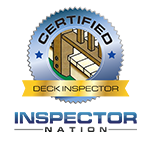The Temperature/Pressure Relief (TPR) Valve is a component often found at the top of the side of a water heater or at the very top of the water heater. The purpose of this component is to prevent personal injury and property damage if the pressure or water temperature becomes so excessive that it could result in an explosion. The valve prevents this explosion by releasing water when it senses that the temperature or pressure has exceeded safe levels. Because it can release super hot water at any moment without warning the following are a few details I should see installed: The TPR valve should be piped down close to the floor, and it should be piped with an appropriate pipe that can withstand very hot water. During a home inspection, one or more these details are often found missing.
My Job:
My job during a home inspection is to identify safety concerns. These missing details on a water heater TPR valve certainly pose safety concerns, therefore I am always on the lookout for them. Below is more explanation for the purpose of the details described above:
Piped down discharge from valve: The TPR valve has to be piped down in order to prevent personal injury or property damage in the event that it releases water. Typically the piped extension is to be extended down to at least 6 inches above the floor. The reason for this extension is to direct the really hot water to the floor as opposed to the body of someone or any property that may happen to be next to the water heater.
Piped with an appropriate material: The piped extension must be of a material that cannot easily melt. Appropriate materials typically used may include CPVC, copper, polyethylene, galvanized steel, polypropylene, or stainless steel. The photo below shows the valve piped with a water hose. This would not be considered an appropriate material because water hoses are not designed to withstand extremely hot water.
Signs of Failure of the TPR Valve:
TPR valves should be inspected at least annually and typically need to be replaced every 3-5 years. One sign that the valve may be failing is if you see a dripping leak coming from it. If the valve is functioning properly, it should not leak slowly because it is designed to discharge highly pressurized water. A slow leak therefore is a sign of failure of the valve. The photos below are examples of small dripping leaks from valves:
The photo below shows a valve that had been leaking long term, and the homeowner had been just letting it leak. A leaking valve indicates that it needs to be replaced to prevent property damage and personal injury.
Signs around the TPR valve may indicate heat, and heat may indicate that the valve or water heater has a defect. The photo below shows plastic around the TPR valve that had melted. This indicates high heat being concentrated on the plastic. This could indicate an issue with the TPR valve.

Conclusion:
Home inspectors are not only looking for defects with the systems and components of a home, but they are looking for safety concerns as well. The TPR valve on water heaters is one very important component to inspect for hazards that could cause personal injury or property damage. It is not uncommon to find the following defects related to TPR valves during a home inspection. If you haven’t looked at your TPR valve lately, it is a good idea to take a few minutes to examine it. If you know the age of your water heater, and it is more than 3-5 years, you should consider replacing the valve. If this appears to be too daunting a task for you, give me a call. It would be my pleasure to serve you in ensuring your water is safe and functioning properly. When you really want to know, contact Duncan Home Inspection Services, LLC.






 >
>